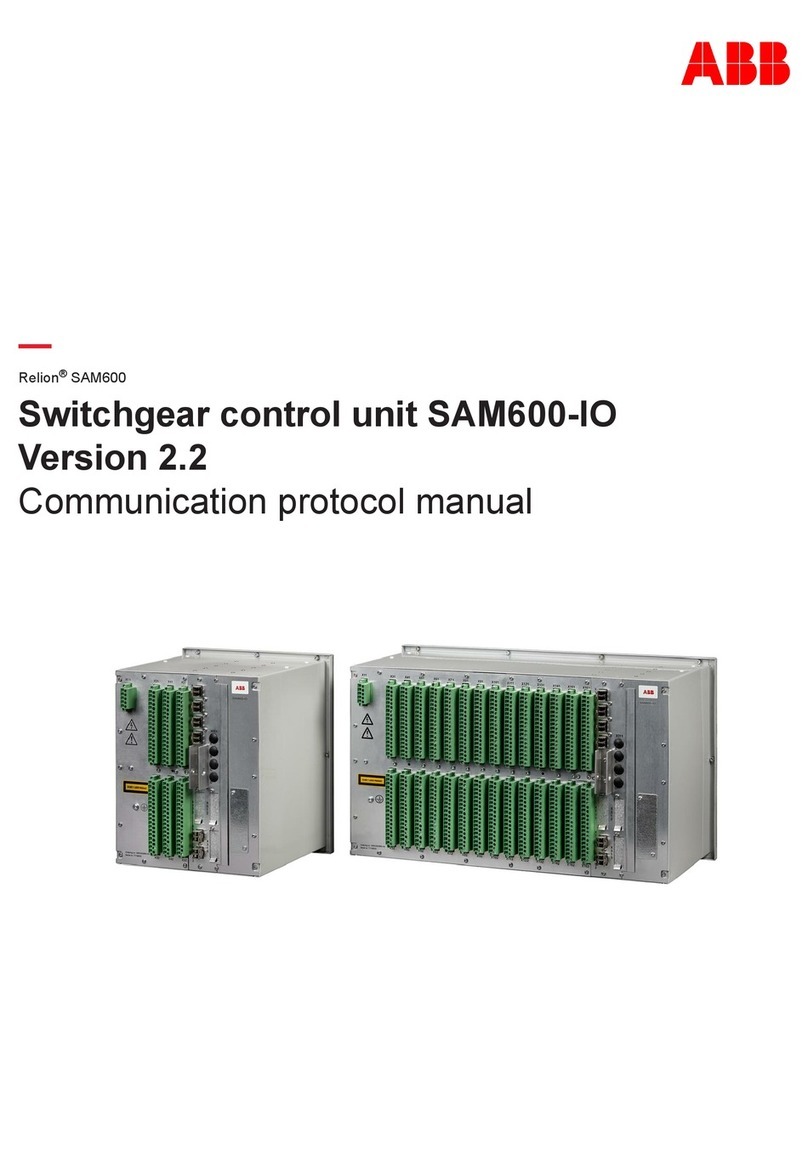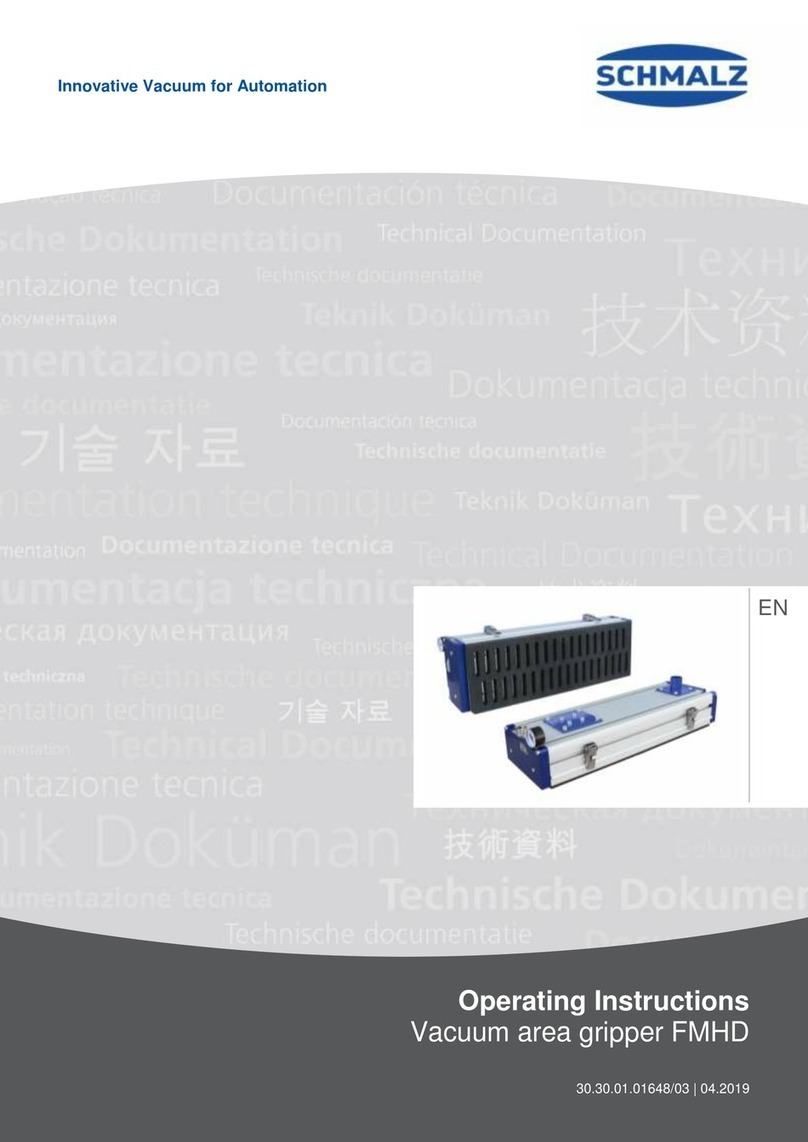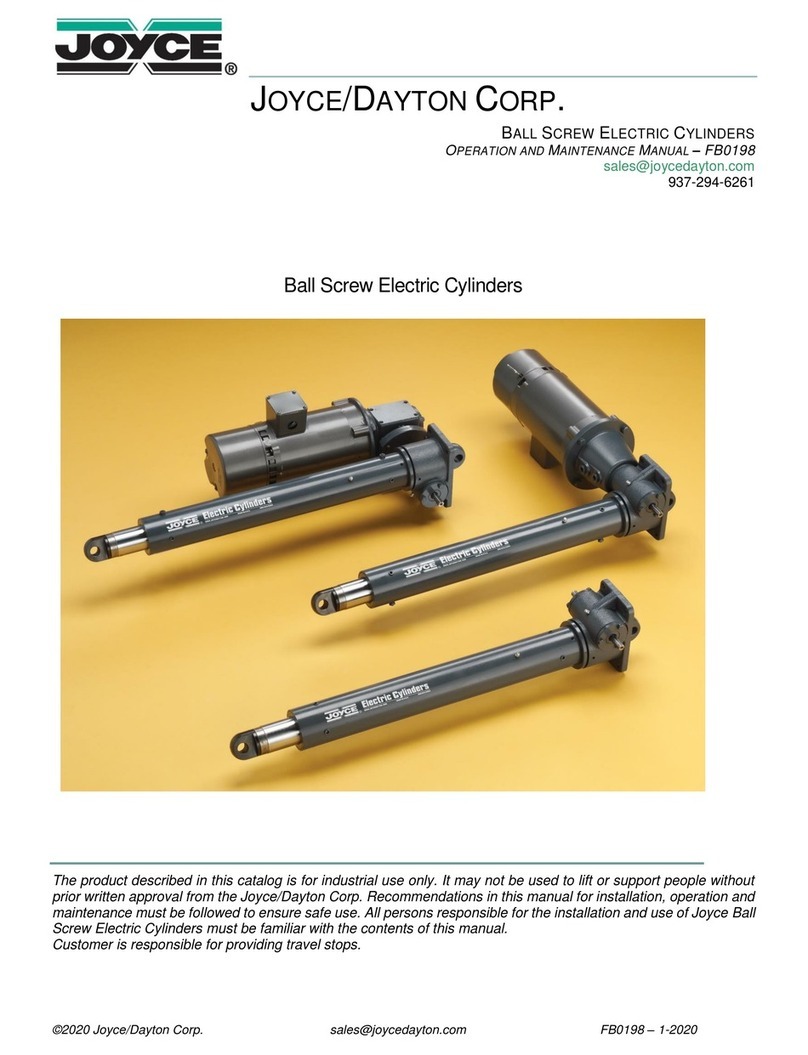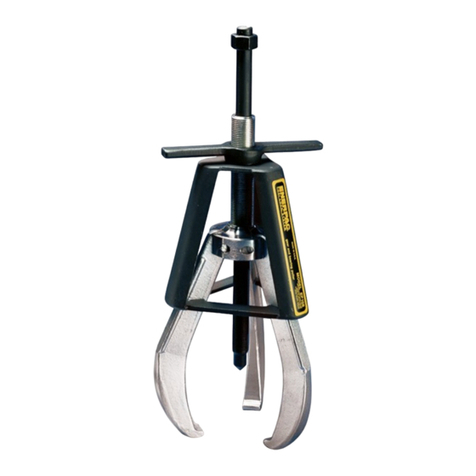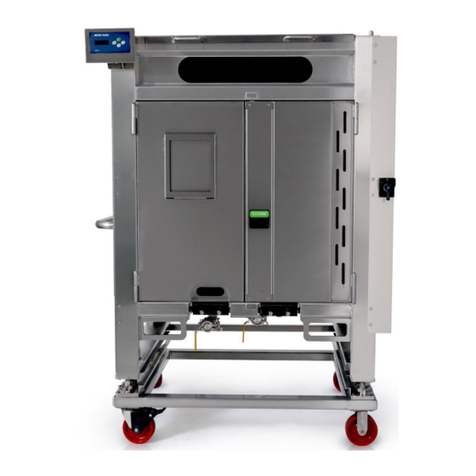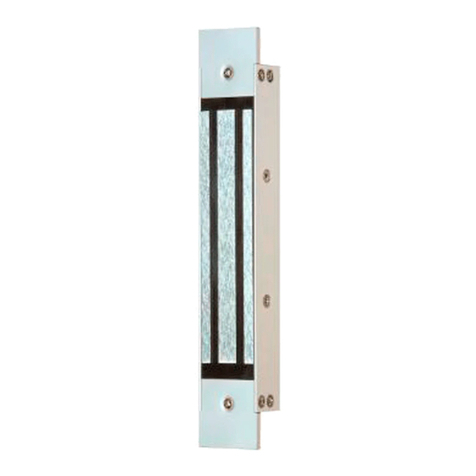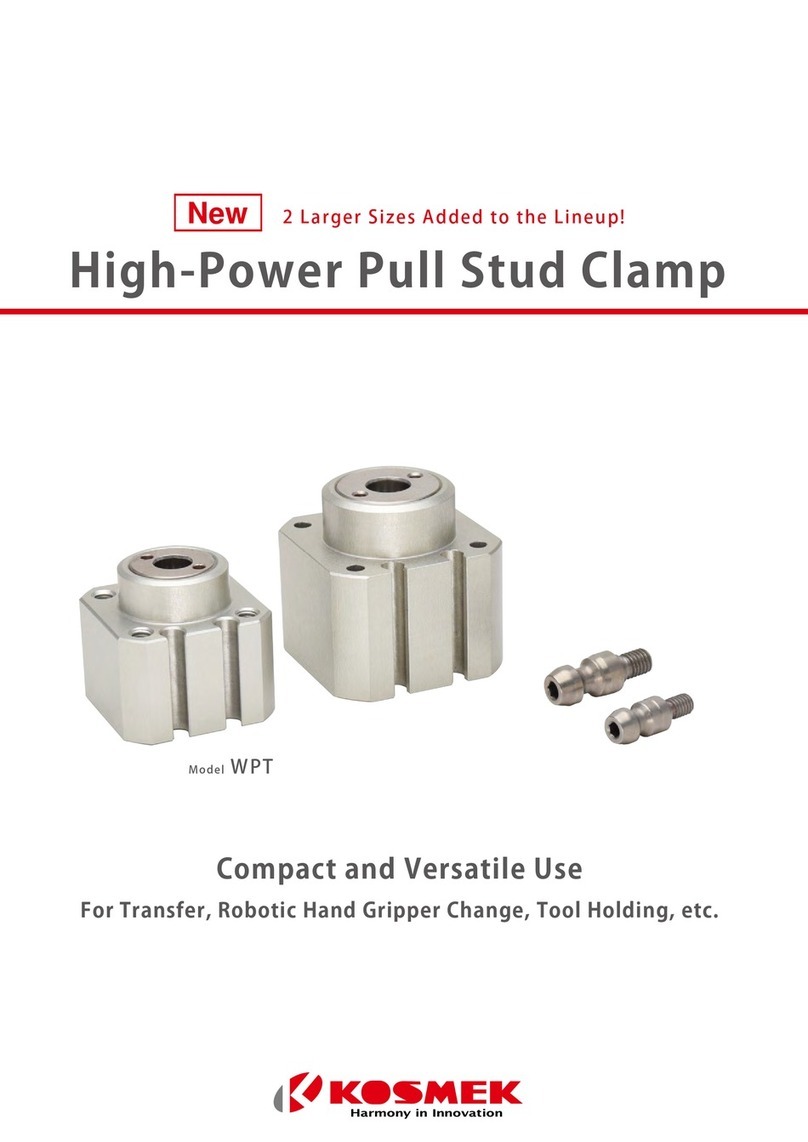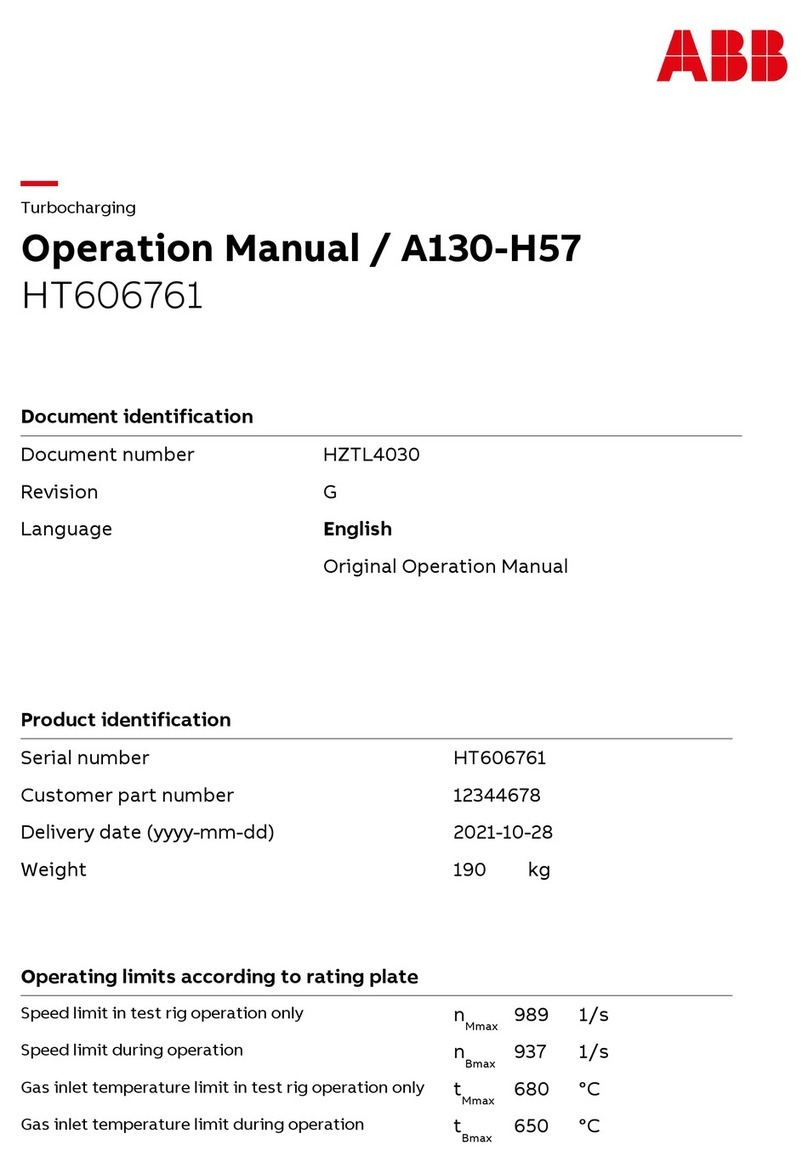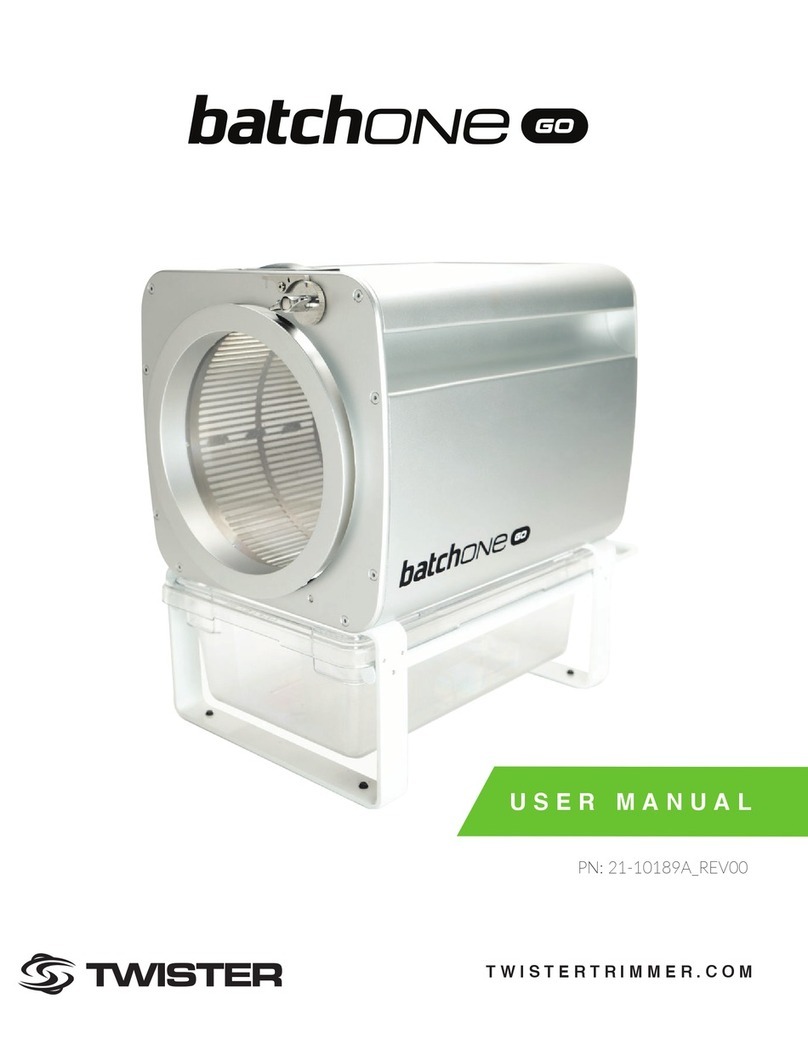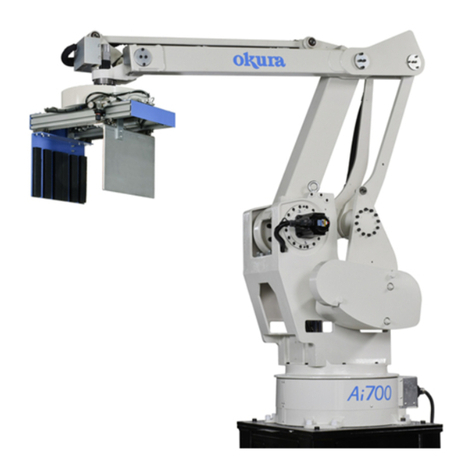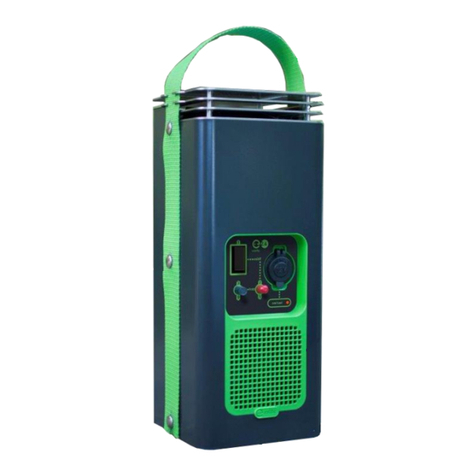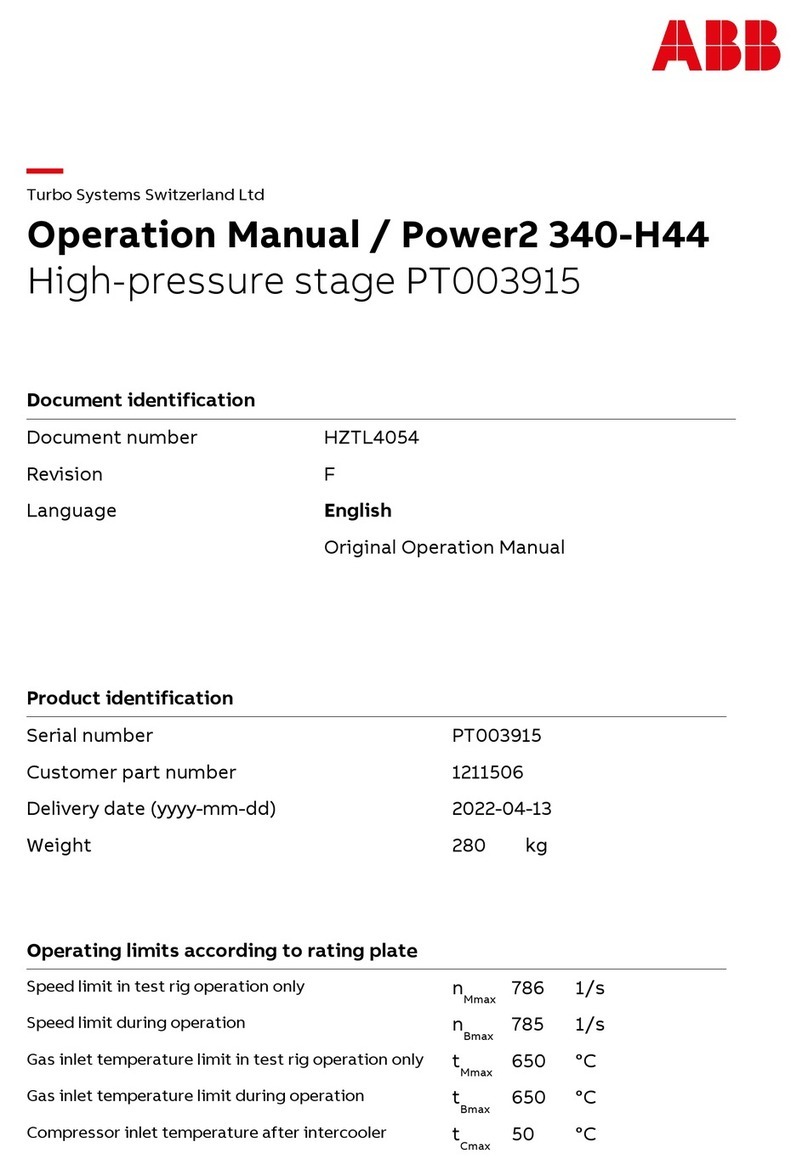Tomco DE89RB100-US Manual

CARBON DIOXIDE
DRY ICE PELLETIZER
OPERATION &
MAINTENANCE
MANUAL

ii

iii
CARBON DIOXIDE
DRY ICE PELLETIZER
OPERATION & MAINTENANCE MANUAL
Copyright © 1998 by TOMCO2EQUIPMENT COMPANY
All rights reserved. No part of this document
may be reproduced by any means without
the written permission of TOMCO2EQUIPMENT COMPANY.
Revision 8– Add Ice behind piston problem to page 5.4
January 14, 2003
TOMCO2EQUIPMENT COMPANY
3340 Rosebud Road
Loganville, Georgia 30052 USA
Telephone
(770) 979-8000 •Toll Free in the U.S. (800) 832-4262
Fax
(770) 985-9179
Parts & Service Fax
(770) 979-2514
E-Mail
Internet
http://www.tomcoequipment.com

iv

TABLE OF CONTENTS
Section 1 - Introduction ................................................................................... 1.0
Tomco2Equipment Company Carbon Dioxide Dry Ice Pelletizers......................... 1.1
Understanding Carbon Dioxide.............................................................................. 1.2
Learning More About Carbon Dioxide.................................................................... 1.5
Specifications........................................................................................................ 1.7
Section 2 - Carbon Dioxide Safety.................................................................. 2.0
General Safety Considerations.............................................................................. 2.1
Rescue.................................................................................................................. 2.2
Inhalation First Aid................................................................................................. 2.2
Exposure First Aid................................................................................................. 2.2
Section 3 - Installation ..................................................................................... 3.0
Section 4 - Operation & Maintenance............................................................. 4.0
Manual Operation ................................................................................................. 4.1
Automatic Operation.............................................................................................. 4.2
Maintenance.......................................................................................................... 4.4
Section 5 - Troubleshooting............................................................................ 5.0
Section 6 - Repair & Adjustments................................................................... 6.0
Section 7 - Appendix........................................................................................ 7.0
Glossary................................................................................................................ 7.1
References............................................................................................................ 7.2
Warranty................................................................................................................ 7.3
Replacement Parts & Ordering Information........................................................... 7.4
Customer Questionnaire........................................................................................ 7.16
Drawings
v

vi

INTRODUCTION
SECTION
1.0
1

INTRODUCTION
TOMCO2EQUIPMENT COMPANY CARBON DIOXIDE DRY
ICE PELLETIZERS
Tomco2has been a CO2equipment specialist for over thirty years. Tomco2manufac-
tures Urethane Insulated CO2Storage Units, Vacuum Insulated CO2Storage Units,
CO2 ISO Containers, CO2 Particle Filters, CO2Vaporizers, CO2Pumps, CO2Clean-
ing Systems, and CO2Water Treatment Systems.
Tomco2offers a 24-hours a day, 365 days a year, Parts and Service Department. The
telephone number is 800-832-4262 (toll free in the U.S.) or 770-979-8000.
Our dry ice pelletizers are available in models capable of producing from 100lbs/
hour to 3000 lbs/hour of dry ice pellets. These units are made of the highest quality
materials and workmanship.
Thank you for purchasing our CO2dry ice pelletizers, and if we can be of service to
you, please contact us.
1.1

INTRODUCTION
UNDERSTANDING CARBON DIOXIDE
Carbon dioxide is a chemical compound formed by combining one atom of carbon
with two atoms of oxygen, and is expressed by the molecular formula CO2. Carbon
dioxide can exist in any one or all three states of matter: solid, liquid, and/or vapor;
depending on conditions of temperature and pressure.
Under normal atmospheric conditions, carbon dioxide exists as a colorless, odorless
gas which is about 1.5 times heavier than air. Carbon dioxide will not burn or
support combustion and will not sustain life.
When confined within a suitable pressure vessel, carbon dioxide can exist in any of
three states of matter depending on conditions of temperature and pressure. The
point at which all three states may exist in equilibrium is -69.9 oF (-56.6 oC) and 60.4
psig (4.2 bar). This is called the triple point. At temperatures and pressures
lower than the triple point, carbon dioxide may be either a solid or a vapor, again
depending on conditions. Dry ice (solid carbon dioxide), at a temperature of -109.3
oF (-78.5 oC) at atmospheric pressure, sublimes (transforms directly from solid into
vapor without the formation of a liquid).
The critical point of carbon dioxide is 87.9 oF (31.1 oC) and 1070.6 psig (73.8 bar).
At temperatures and pressures greater than 87.9 oF (31.1 oC) and 1070.6 psig (73.8
bar), carbon dioxide cannot exist as a liquid. At pressures and temperatures greater
than the critical point, carbon dioxide exists only as a supercritical fluid.
At temperatures and pressures above the triple point and below the critical point,
carbon dioxide liquid with overlying vapor may exist in equilibrium within a closed
vessel. Within this range, there is a definite relationship between temperature,
pressure, and density.
By following the vapor pressure curve in Figure 1.1 on page 1.3, it becomes obvious
that if you desire to store liquid carbon dioxide at 70 oF (21.1 oC), the pressure vessel
would have to be built to withstand pressures of around 840 psig (57.9 bar). By
1.2

INTRODUCTION
following the liquid density curve, one finds that the liquid becomes less dense as the
temperature increases and at 70 oF (21.1 oC), the liquid density is around 47 pounds
per cubic foot (754 kg/m3).
By comparing the pressure and liquid density at 70 oF (21.1 oC) [837.8 psig (57.8
bar) and 47.6 pounds per cubic foot (764 kg/m3)] with the pressure and density at
0 oF (-17.8 oC) [291.1 psig (20.1 bar) and 63.65 pounds per cubic foot (1022 kg/m3)],
it is obvious that relatively large quantities of carbon dioxide liquid can be stored in
relatively small, thin walled pressure vessels; hence low-pressure bulk storage of
CO2.
The term "low-pressure" is used in the industry to describe the storage of carbon
dioxide at low temperatures below ambient, usually around 0 oF (-17.8 oC). It is a
relative term and should not be taken literally, as the pressures involved range up to
approximately 350 psig (24.1 bar).
1.3
Fig. 1.1 - Carbon Dioxide Density & Vapor Pressure Curves

INTRODUCTION
1.4
Molecular Weight 44.01 lb/lb-mol 44.01 kg/kg-mol
Vapor Pressure
at 70 °F (21.1 °C)
at 32 °F (0 °C)
at 2 °F (-16.7 °C)
at -20 °F (-28.9 °C)
at -69.9 °F (-56.6 °C)
at -109.3 °F (-78.5 °C)
838 psig
491 psig
302 psig
200 psig
60.4 psig
0 psig
57.79 bar
33.86 bar
20.83 bar
13.79 bar
4.17 bar
0 kPa
Density of the gas
at 70 °F (21.1 °C)
at 32 °F (0 °C)
0.1144 lb/ft3
0.1234 lb/ft3
1.833 kg/m3
1.977 kg/m3
Specific gravity of the gas
at 70 °F (21.1 °C)
at 32 °F (0 °C)
1.522
1.524
1.522
1.524
Specific volume of the gas
at 70 °F (21.1 °C)
at 32 °F (0 °C)
8.741 ft3/lb
8.104 ft3/lb
0.5457 m3/kg
0.5059 m3/kg
Density of liquid, saturated
at 70 °F (21.1 °C)
at 32 °F (0 °C)
at 2 °F (-16.7 °C)
at -20 °F (-28.9 °C)
at -69.9 °F (-56.6 °C)
47.6 lb/ft3
58.0 lb/ft3
63.3 lb/ft3
66.8 lb/ft3
73.5 lb/ft3
764 kg/m3
931 kg/m3
1016 kg/m3
1072 kg/m3
1179 kg/m3
Sublimation temperature (1 atm) -109.3 °F -78.5 °C
Critical temperature 87.9 °F 31.1 °C
Critical pressure 1070.6 psig 73.81 bar, abs
Critical density 29.2 lb/ft3468 kg/m3
Triple point -69.9 °F at 60.4 psig -56.6 °C at 4.16 bar
Latent heat of vaporization
at 32 °F (0 °C)
at 2 °F (-16.7 °C)
at -20 °F (-28.9 °C)
100.8 Btu/lb
119.0 Btu/lb
129.6 Btu/lb
234.5 kJ/kg
276.8 kJ/kg
301.4 kJ/kg
Latent heat of fusion at -69.9 °F (-56.6 °C) 85.6 Btu/lb 199 kJ/kg
Density of liquid at 2 °F (-16.7 °C) 63.3 lb/ft31015.9 kg/m3
Latent heat of sublimation at -109.3 °F (-78.5 °C) 245.5 Btu/lb 571.0 kJ/kg
Table 1.1 - Physical Constants of Carbon Dioxide

INTRODUCTION
1.5
LEARNING MORE ABOUT CARBON DIOXIDE
An important part of maintaining a carbon dioxide dry ice pelletizer is understanding
the properties of CO2. Therefore, maintenance and service of your pelletizer should
be performed only by a qualified carbon dioxide equipment technician.
To start or increase your knowledge of carbon dioxide, we recommend that you be-
gin with the pamphlets and literature from the CGA (Compressed Gas Association).
The CGA has a number of pamphlets and videos on CO2and CO2equipment.
We recommend:
G-6 Carbon Dioxide
G-6.1 Standard for Low Pressure Carbon Dioxide Systems at Consumer Sites
G-6.4 Safe Transfer of Low Pressure Liquefied Carbon Dioxide in Cargo Tanks,
Tank Cars and Portable Containers
AV-7 Characteristics and Safe Handling of Carbon Dioxide
The CGA has other publications, videos, etc. that pertain to the CO2and CO2equip-
ment. Contact the CGA for a list of available publications at:
Compressed Gas Association
1725 Jefferson Davis Hwy.
Suite 1004
Arlington, VA 22202-4102 USA
Phone: (703) 412-0900

INTRODUCTION
CARBON DIOXIDE DRY ICE PELLETIZER
SPECIFICATIONS
METHOD OF OPERATION: The dry ice Pelletizer consists of a system for
injecting liquid CO2into a compression cylinder. The process of reducing the
pressure on the liquid from approximately 300 psi (20.68 bar), below the Triple
Point, to atmospheric pressure causes about 40% of the carbon dioxide to
change to a solid. The remaining carbon dioxide changes to a vapor and is
vented from the machine. Finally, the solid is hydraulically extruded through
a die to form dry-ice pellets. These pellets can range in size from 0.114” (2.9
mm) to 3/4” (19.05 mm) diameter. The LB-450 disk press has an extra step
that takes the extruded pellets and forms them into a disk 4” (101.6 mm) in
diameter by 1/2” (12.7 mm) thick.
HYDRAULIC SYSTEM:
•High oil temperature automatic shut-off (greater than 150 ºF (65.5 ºC))
•Low oil level automatic shut-off
•High pressure relief valve (see Table 1.2 on page 1.7 for actual setting of
each model
ELECTRICAL: Available to meet electrical requirements worldwide
(Capacities may vary due to frequency variation.)
FEATURES:
•U.S.D.A (United States Department of Agriculture) approved
•Automatic (unattended) operation
1.6

INTRODUCTION
1.7
MODEL DE89RB-
100-US HP-200 DE89RB-
500 HP-500 DE89RB-
1000 HP-1000 DE89RB-
1500 LB-450
WIDTH 40"
(101.6 cm) 40"
(101.6 cm) 46"
(116.8 cm) 46"
(116.8 cm) 46"
(116.8 cm) 46"
(116.8 cm) 50"
(127.0 cm) 46"
(116.8 cm)
LENGTH 40"
(101.6 cm) 40"
(101.6 cm) 117"
(297.2 cm) 117"
(297.2 cm) 117"
(297.2 cm) 117"
(297.2 cm) 118"
(300 cm) 78"
(198.0 cm)
HEIGHT 60"
(152.4 cm) 60"
(152.4 cm) 81"
(206.0 cm) 84"
(213.4 cm) 81"
(206.0 cm) 84"
(213.4 cm) 81"
(206.0 cm) 79"
(201 cm)
APPROX.
WEIGHT 945 lbs
(429 kg) 945 lbs
(429 kg) 2770 lbs
(1256 kg) 3200 lbs
(1455 kg) 3700 lbs
(1682 kg) 4000 lbs
(1818 kg) 5018 lbs
(2280 kg) 2500 lbs
(1136 kg)
CYCLE TIME
25 seconds
per cylinder 43 seconds
per cylinder 55 seconds
per cylinder 55 seconds
per cylinder 55 seconds
per cylinder 55 seconds
per cylinder 40 seconds
per cylin-
der
8 seconds
per disc
NUMBER OF
CYLINDERS 1 2 1 1 2 2 2 3
MOTOR 7.5 HP
(5.6 kW) 7.5 HP
(5.6 kW) 15 HP
(11.2 kW) 25 HP
(18.6 kW) 20 HP
(15 kW) 25 HP
(18.6 kW) 25 HP
(18.6 Kw) 15 HP
(11.2 kW)
HYDRAULIC
OIL CAPACITY 35 gallons
(133 liters) 35 gallons
(133 liters) 120 gallons
(455 liters) 120 gallons
(455 liters) 120 gallons
(455 liters) 120 gallons
(455 liters) 120 gallons
(455 liters) 120 gallons
(455 liters)
2700 psig
(186 bar) 2700 psig
(186 bar) 3000 psig
(206.8 bar) 3000 psig
(206.8 bar) 3000 psig
(206.8 bar) 3000 psig
(206.8 bar) 3000 psig
(206.8 bar) 2200 psig
(152 bar)
HYDRAULIC
PRESSURE
RELIEF
High
Capacity
57 3/4”
(146.7cm)
128 7/8”
(327.3cm)
93”
(236.2cm)
8000 lbs
(3636 kg)
40 seconds
per cylinder
2
50 hp
(37.3 kW)
220 gallons
(832.7 li-
ters)
4000psi
(276 bar)
Table 1.2 - Dry Ice Pelletizer Dimensional Data

CARBON DIOXIDE
SAFETY
SECTION
2.0
2

CARBON DIOXIDE SAFETY
The text in this section has been adapted from CGA (Compressed Gas Association)
publication CGA G-6 – 1984: Carbon Dioxide.
GENERAL SAFETY CONSIDERATIONS
Gaseous carbon dioxide is an asphyxiant. Concentrations of 10% or more can pro-
duce unconsciousness or death. Lower concentrations may cause headache, sweat-
ing, rapid breathing, increased heart rate, shortness of breath, dizziness, mental de-
pression, visual disturbances, and shaking. The seriousness of the latter manifesta-
tions is dependent on the concentration of carbon dioxide and the length of time the
individual is exposed.
Carbon dioxide is an odorless gas and should be treated as a material with poor
warning properties. It is denser than air, and high concentrations can persist in open
pits, tanks, or low depressions on the terrain. Before entering such an area, carbon
dioxide monitoring should be carried out and the area cleared by forced ventilation,
or a self-contained, supplied air respirator should be worn.
Appropriate warning signs should be affixed outside of those areas where high con-
centrations of carbon dioxide gas can accumulate. An example is shown below:
2.1
CAUTION - CARBON DIOXIDE GAS
Ventilate the area before entering.
A high CO2gas concentration
may occur in this area
and may cause suffocation.

CARBON DIOXIDE SAFETY
RESCUE
Do not attempt to remove the individual without utilizing proper rescue equipment or
you may also become a casualty. If the exposed person is unconscious, obtain assis-
tance and put into effect the established emergency procedures.
INHALATION FIRST AID
Inhalation of gaseous carbon dioxide can adversely affect body function. Skin, eye,
or mouth contact with dry ice (solid carbon dioxide) or compressed carbon dioxide
can cause adverse effects.
If a person has inhaled large amounts of carbon dioxide and is exhibiting adverse ef-
fects, move the exposed individual to fresh air at once. If breathing has stopped, per-
form artificial respiration. Keep the affected person warm and at rest. Get profes-
sional medical attention immediately.
EXTERNAL EXPOSURE FIRST AID
Skin or mouth contact with dry ice or with vapor or liquid carbon dioxide discharged
from a container may result in frostbite, causing skin lesions or more serious injury
from deep freezing of the tissues.
If dry ice or compressed CO2vapor comes in contact with the skin or mouth, stop
the exposure immediately. If frostbite has occurred, obtain professional medical at-
tention immediately. Do not rub the area. Do not apply heat warmer than 107 °F
(41.7 °C).
Eye contact with dry ice or compressed CO2should be considered as a corneal burn.
Frostbite of the eye structure may also occur.
If dry ice or CO2vapor or liquid comes in contact with the eyes, stop the exposure
and obtain professional medical attention immediately.
2.2


INSTALLATION
SECTION
3.0
3

INSTALLATION
INSTALLATION
Following is the standard installation procedure for a Tomco2Equipment Co. carbon
dioxide dry ice pelletizer. Note: This should be performed by a qualified carbon
dioxide equipment technician only. Refer to Figure 3.1 on page 3.3.
Note: A liquid CO2supply pressure of 250 to 300 psig (17.23 to 20.68 bar) is re-
quired for satisfactory performance. Contact Tomco2Equipment Co. if liquid CO2
pressure will be lower than 250 psig (17.23 bar). Contact Tomco2Equipment Co. if
liquid CO2 Dew point will be above –60°F (-51.1°C).
1. Install an insulated connecting line between the liquid process isolation valve on
the carbon dioxide storage unit and the 1” FNPT (1/2” on 100lb and 200lb ma-
chines) (1 1/2” on high capacity machines) connection on the rear of the pellet-
izer. We recommend that you use pre-insulated (2 1/2” (63.5 mm) urethane) 1
1/8” (1 5/8” on high capacity) Type K copper. However, 1” NPT (1 1/2” on high
capacity) schedule 80 seamless pipe can be substituted. Include in this line a core
type liquid CO2filter. We recommend a Sporlan Valve Co. model C-1449G for
1 1/8” copper or a Sporlan Valve Co. model C-1448P for 1” NPT pipe. Each of
these filters uses a single Sporlan Valve Co. core model RC-4864. (Filters are
available from Tomco2Parts and Service.) This line should be no longer than
25’ (7.62 m). Tomco2recommends the use of an automatic vapor purge device
on any pelletizer that has more than 25’ (7.62m) of liquid supply piping. Con-
tact Tomco2Equipment Co. if the installation will require more than
25’ (7.62m) of liquid supply piping. The above is for a single machine operation.
If several machines are connected to the same liquid line, consider using sizes
larger than mentioned above.
Using an undersized liquid line will result in decreased production.
2. Install a connecting line between the vapor process isolation valve on the carbon
dioxide storage unit and the 1/4” FNPT connection on the rear of the pelletizer.
The construction material of this line is not critical and is up to the installer’s dis-
cretion, but it must be approved for at least 350 psig (24.1 bar).
3.1
This manual suits for next models
7
Table of contents
Popular Industrial Equipment manuals by other brands
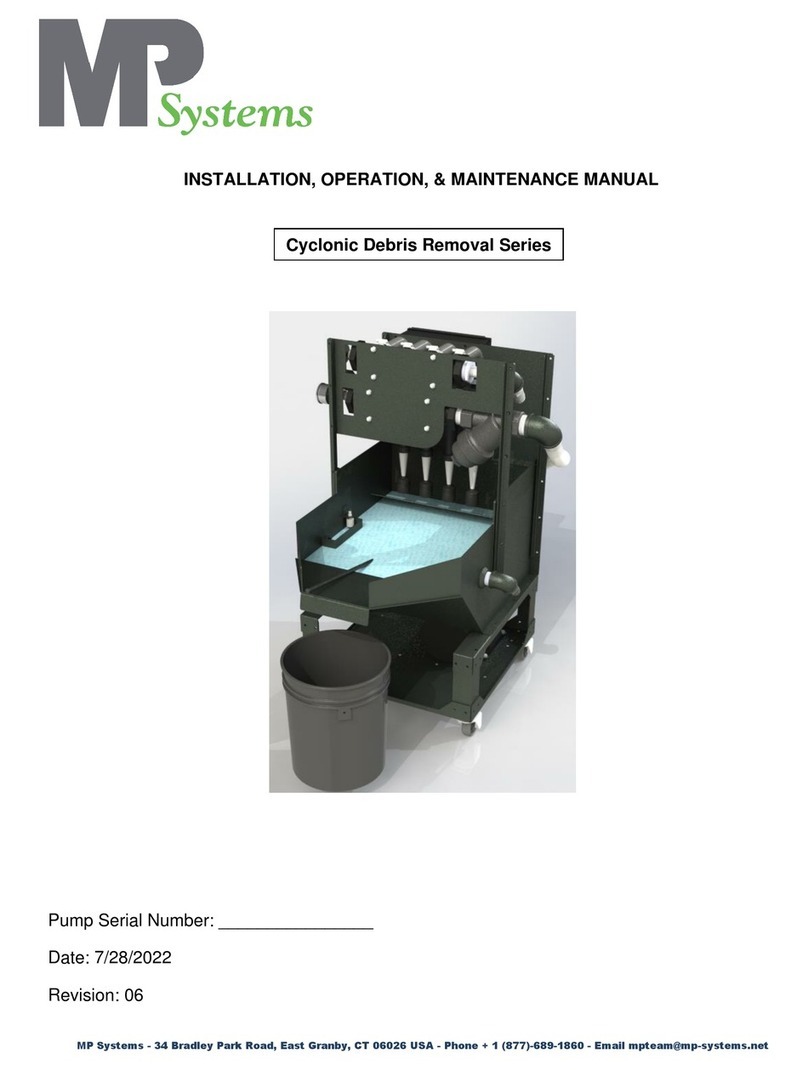
MP Systems
MP Systems Cyclonic Debris Removal Series Installation operation & maintenance
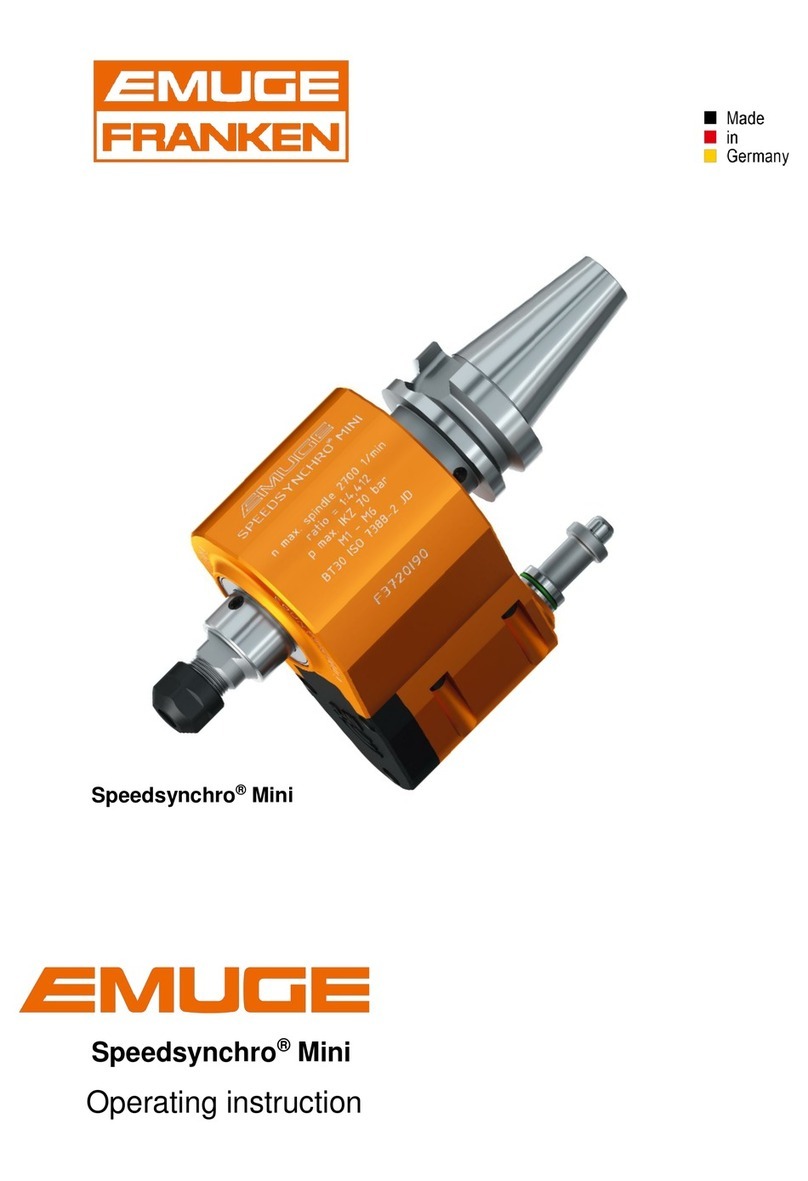
EMUGE
EMUGE Speedsynchro Mini Operating instruction
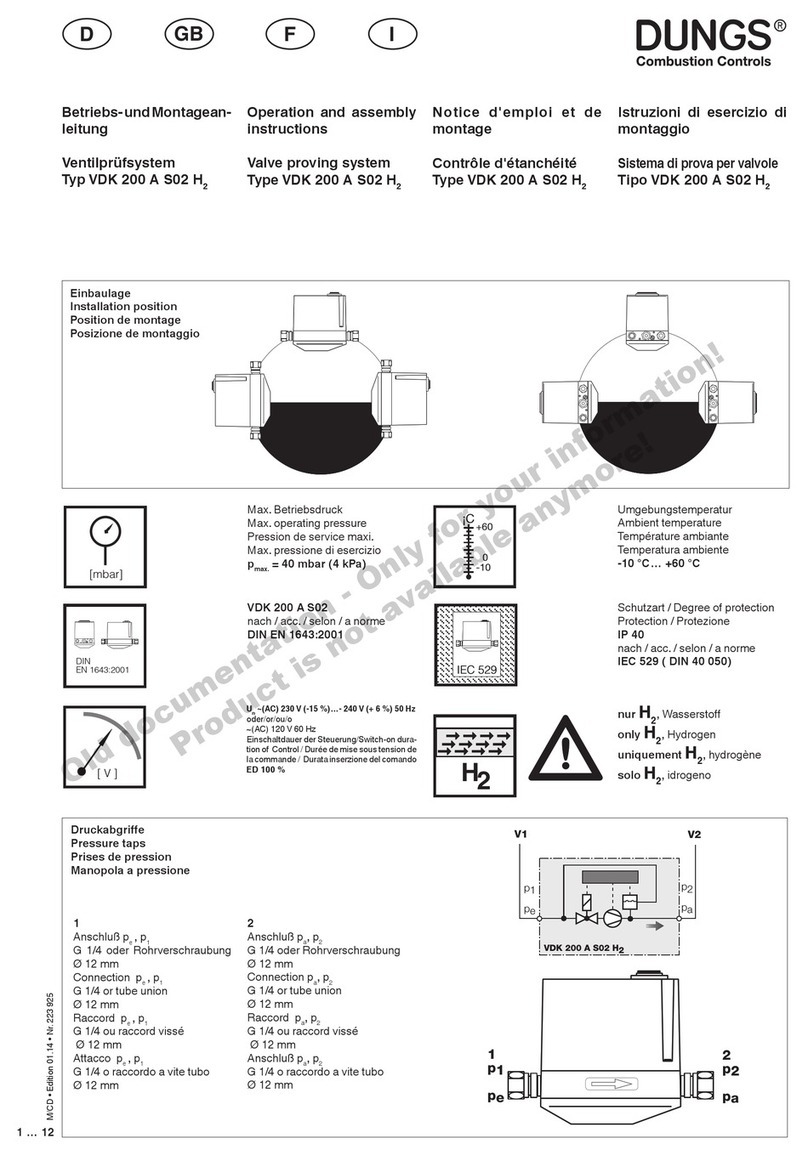
Dungs
Dungs VDK 200 A S02 H2 Operation and assembly instructions
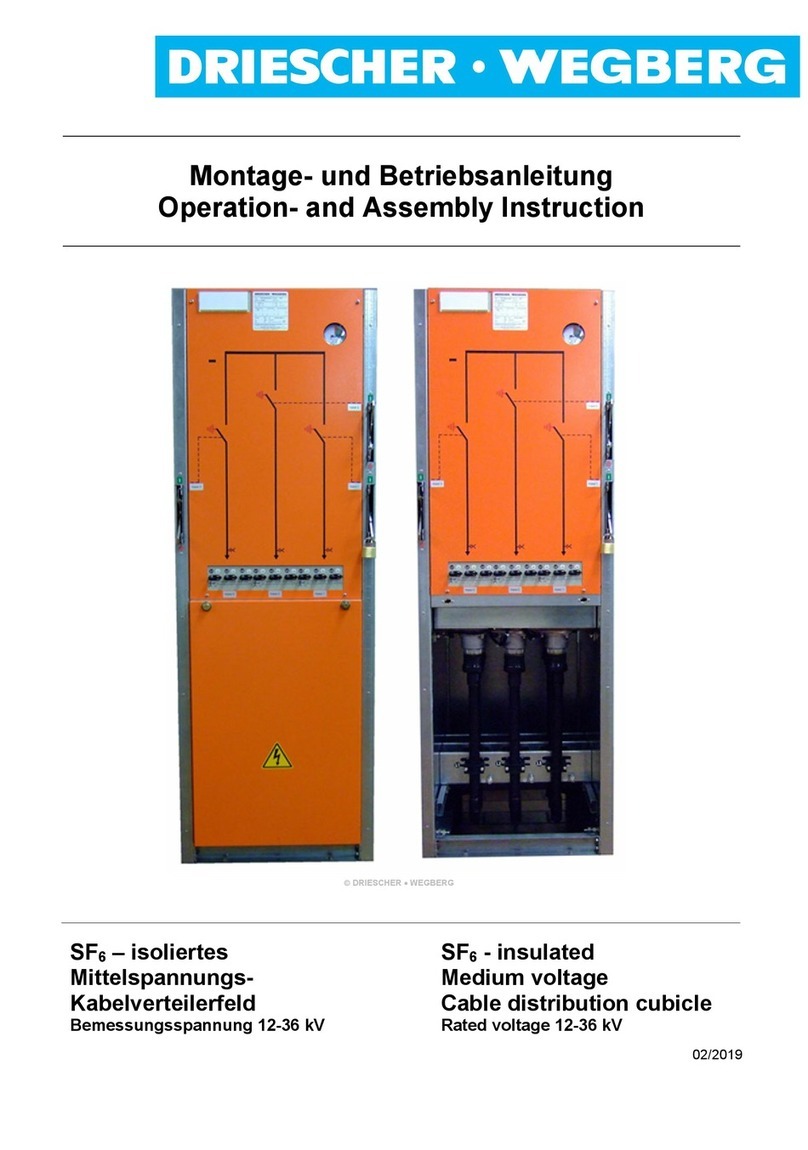
DRIESCHER-WEGBERG
DRIESCHER-WEGBERG SF6 Operation – and Assembly Instruction
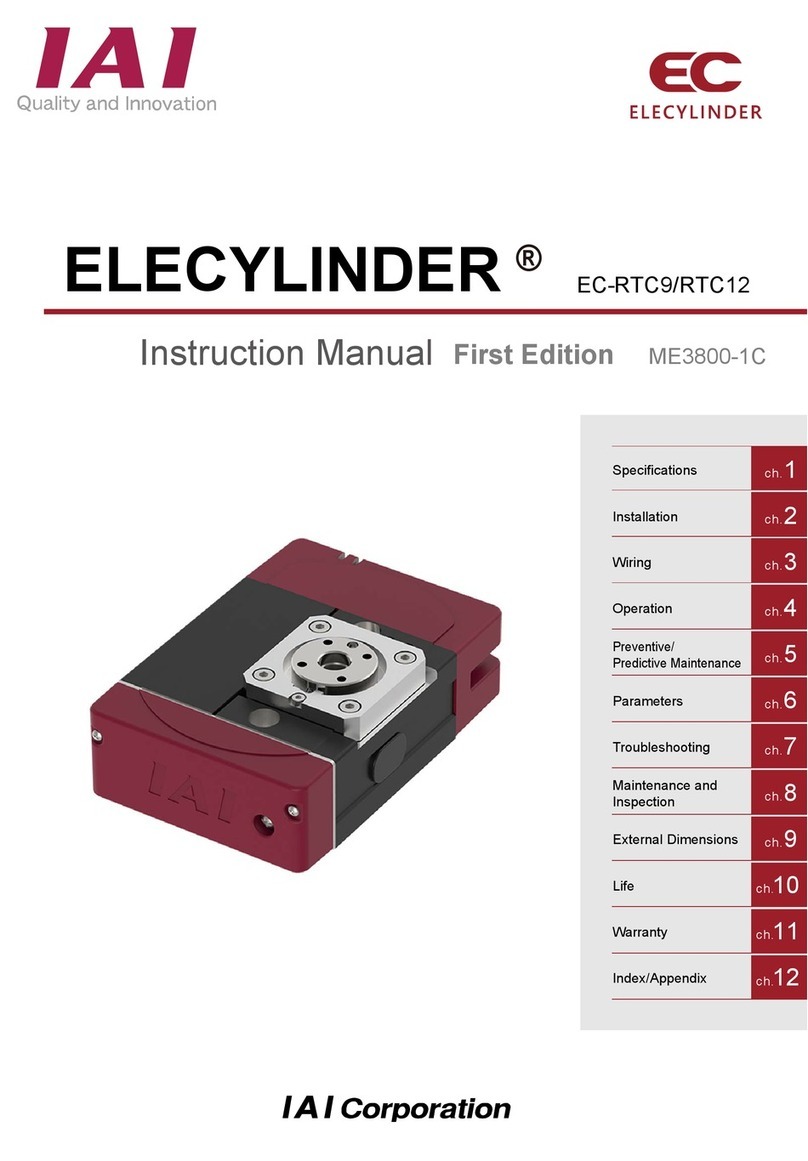
IAI
IAI ELECYLINDER EC-RTC9 instruction manual
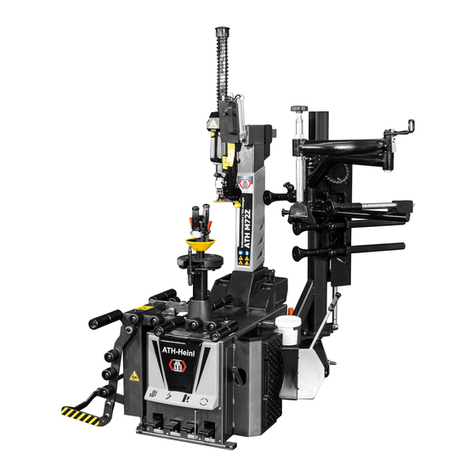
ATH-Heinl
ATH-Heinl M72Z user manual
